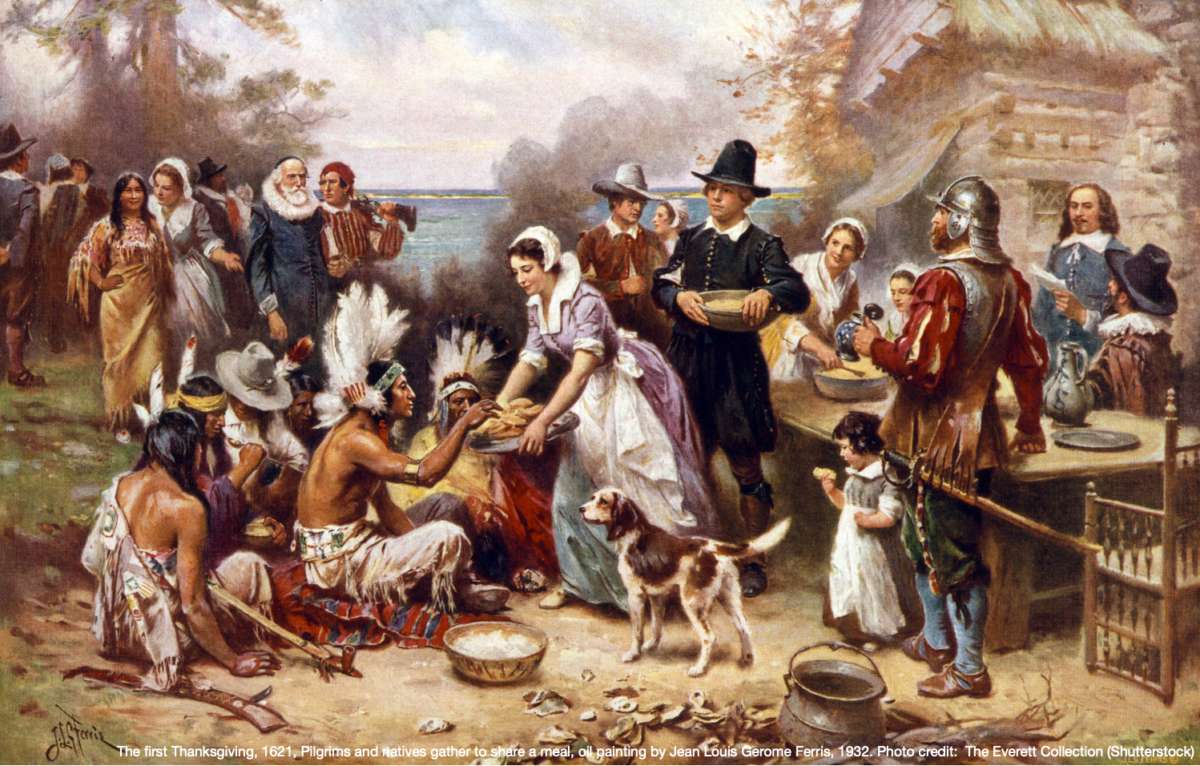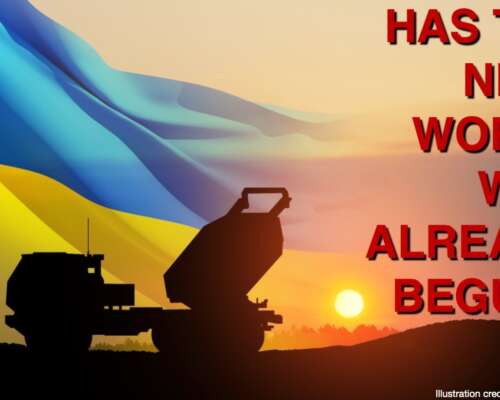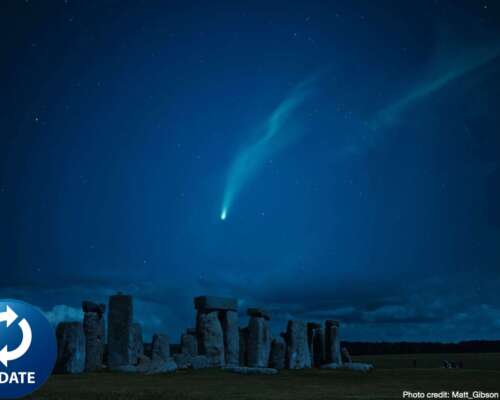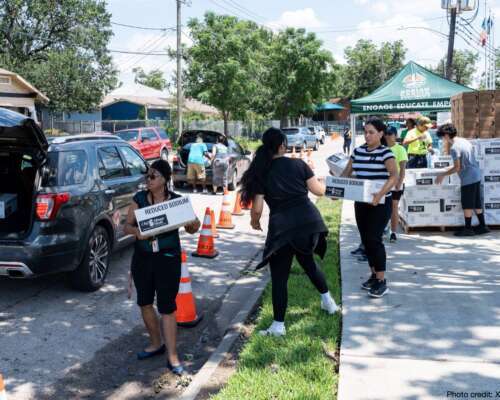This year we will observe the 400th anniversary of the first Thanksgiving held by the Pilgrims at Plymouth Bay Colony under the supervision of William Bradford. Nearby, Massachusetts Bay Colony would be settled nine years later by a religious group known as the Puritans under the command of John Winthrop. By 1640, there would be 10,000 settlers at the Massachusetts Bay Colony, whose growth rapidly surpassed that of the Plymouth Bay Colony. And, while we celebrate Thanksgiving in November, it may actually have occured in October of 1621. School children traditionally have learned the story of the Pilgrims, the Mayflower and the Mayflower Compact, and the first Thanksgiving. Here are a few of the details.
The journey
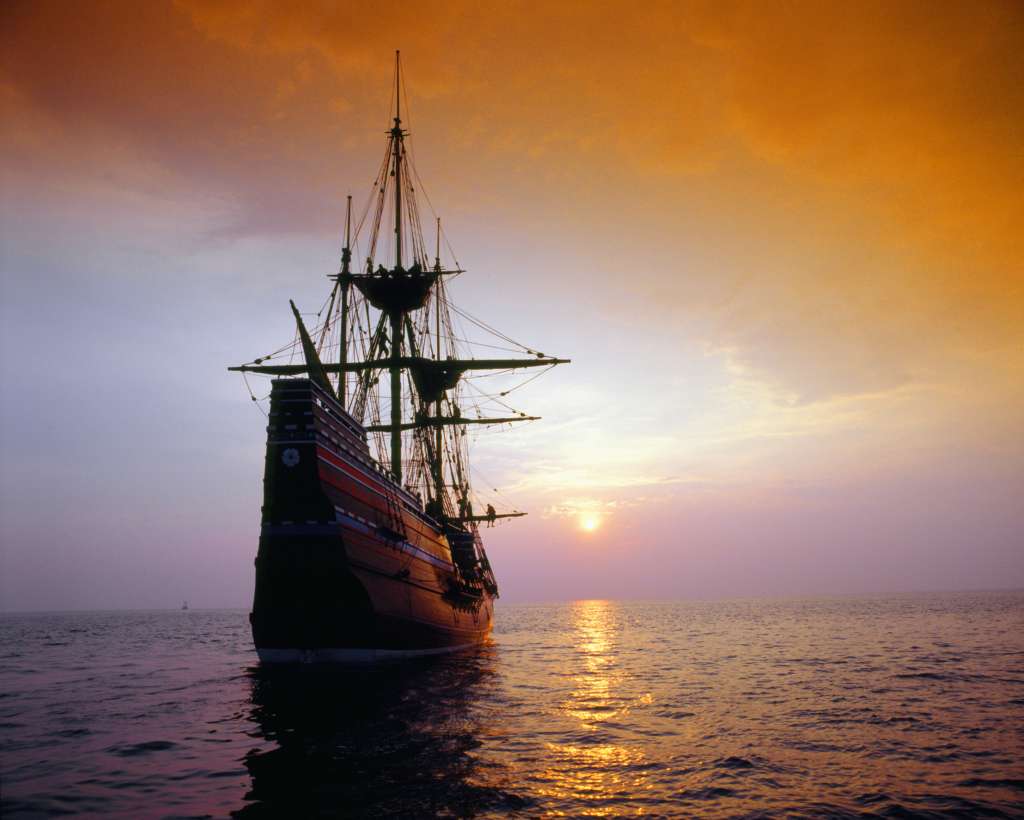
The Mayflower departed Plymouth, England on September 6th, which was very late in the year of 1620. They wanted to leave in early summer with a second boat, but that boat was destined not to leave with them. There is an important caveat here. The Pilgrims were British subjects who fled to the Netherlands to escape religious persecution. It was in the Netherlands that they decided to sail to the New World. However, their trip across the Western Sea required that they leave from England after outfitting for the journey.
There were 132 passengers and crew aboard a ship that was only 106 feet long. The ship landed two months and three days later, near present Cape Cod. The Pilgrims hoped to travel to the mouth of the Hudson River, and perhaps as far south as Virginia, but ultimately decided to stay in Plymouth Bay where they reached landfall, because winter was rapidly approaching and provisions were running low. Before setting foot on dry land, forty one men under Bradford signed a social covenant known as the Mayflower Compact.
Bradford describes the moment when their feet first touched the ground of the New World:
“Being thus arived in a good harbor and brought safe to land, they fell upon their knees and blessed the God of heaven, who had brought them over the vast and furious ocean, and delivered them from all the periles and miseries therof, againe to set their feete on the firme and stable earth, their proper elemente.”
Bradford, William. Plymouth Plantation, Vol I p. 94. Read his entire work here.
During that first month of November (and after), most of the company remained on ship except for an exploration party of sixteen men under the command of Myles Standish who discovered a cache of Indian corn.1 On November 20, Susanna White, wife of William White, gave both to a son named Peregine White. Another baby, Oceanus Hopkins, the son of Stephen and Elizabeth Hopkins was born while the Mayflower was still at sea. While Peregine lived to the ripe old age of 84, Oceanus died only seven years after his birth, and perhaps much earlier than that, as historians cannot agree whether he lived seven years or only a few months.
The first task was to construct shelter from the coming winter. Living conditions onboard the Mayflower were rapidly deteriorating, and 45 out of 102 passangers died of scurvy. By January, enough structures had been build on shore to offload the ship. By April 5, 1621, the Mayflower returned to England.
The first Thanksgiving
In the autumn of 1621, Governor William Bradford set aside a day for prayer and celebration, in gratitude of God’s deliverance. Bradford wrote:
“They began now to gather in the small harvest they had and to fitte up their houses and dwellings against winter, being all well recovered in health and strength, and had all things in good plenty; for as some were thus employed in affairs abroad, others were exercised in fishing about codd and bass and other fish of which they took good store, of which every family had their portion. All the sommer there was no waste.
“And none began to come in store of foule, as winter approached, of which this place did abound when they came first(but afterward decreased by degrees) and besides water foul there was great store of wild turkeys, of which they took many, besides venison, etc.
Besides, they had about a pecke of meal a week to a person, or, now since harvest, Indian corn to that proportion.”
“The Origin of Thanksgiving.” The Journal of Education, vol. 62, no. 20 (1554), Trustees of Boston University, 1905, pp. 556–57, http://www.jstor.org/stable/42807157.
To this, Plymouth resident John Winslow adds”
“Our harvest being gotten in, our Governor sent four men on fowling, that so we might after a more special manner rejoice together, after we had gathered together the fruit of our labours. They four in one day killed as much food as with a little help besides, served the company almost a week. At which time, amongst other recreations, we exercised our arms, many of the Indians coming amongst us, and amongst the rest their greatest king, Massasoit with some 90 men, whom for three days we entertained and feasted. And they went out and killed five deer which they brought to the plantation and bestowed on our Governor and the Captain and others.”
Smith, Andrew F. “The First Thanksgiving.” Gastronomica, vol. 3, no. 4, University of California Press, 2003, pp. 79–85,
Today, It may be that we celerbrate Thanksgiving on a Thursday, because the Pilgrims (and Puritans) would have refused to celebrate it in a Sunday (their Sabbath.)
Relationships with the Indians
Historian David Bushnell says that the Pilgrims coexisted peacefully with the Indians in the area. The Pilgrims undoubtedly understood that they needed the Indians more than the Indians needed them. But it was much more than that. Bushnell says that the Pilgrims:
“trusted in the Ten Commandments. They would attempt to behave with Christian charity toward the Indian, and they expected to be treated with similar decency in return.”
Bushnell, David. “The Treatment of the Indians in Plymouth Colony.” The New England Quarterly, vol. 26, no. 2, New England Quarterly.
As far as the Indians and their attitutes towards the Pilgrims are concerned, Edward Winslow writes in a letter dated December 11, 1621:
“We have found the Indians very faithful to their covenant of peace with us, very loving and ready to pleasure us. We go to them often, and they come to us…We entertain them familiarly in our houses,and they as friendly bestowing their venison on us. They are people without any religion or knbowledge of any God, yet very trusty, quick of apprehension, ripe-witted, just.”
Paul, Heike. “Pilgrims and Puritans and the Myth of the Promised Land.” The Myths That Made America: An Introduction to . . .
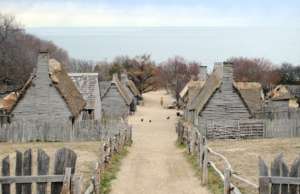
An Indian named Squanto became the liaison between the Pilgrims and the Patuxet tribe. Squanto had been kidnapped by Europeans as many as five years before the Pilgrims landed and taken to Europe, where he learned English, a language which enabled him to communicate with the Pilgrims. He returned in time to assist Bradford and Standish. Squanto lived with the pilgrims for twenty months–the rest of his life–teaching them how to plant corn, how to hunt, fish, trap and trade with other neighboring tribes. He took them to places they could never have found on their own. However, Squanto died of Indian Fever, a cause of great sorrow among the Pilgrims in general, and to Bradford in particular. One of the many things Squanto had done was (to) represent the Pilgrims among the tribes in the area, some of which were warring with each other. Would an alliance with the Pilgrims tip the balance of power in favor of one tribe to the detriment of the others, or should the Indians unite to drive out the settlers? Eventually, a peace treaty was reached between the Patuxets and the Pilgrims.
In the long run, the indigenous people in New England suffered at the hands of the English, according to a recent article in the “Washington Post.“
Pilgrims and puritans: What’s the difference?
So, what was the difference between Pilgrims and Puritans? According to Heike Paul, Chair of American studies at Friedrich-Alexander-University Erlangen-Nurnberg and director of the Bavarian American Academy in Munich
“They were two groups of English religious dissenters influenced by the Reformation, in particular Calvinism, who turned away not only from the Catholic, but also from the Anglican Church and sort to establish a new “Holy Commonwealth” in North America. They considered America their Promised Land, thus taking Biblical Scripture as prophecy and anticipating its fulfillment in their own lived reality in North America.”
Paul, Heike. “Pilgrims and Puritans and the Myth of the Promised Land.” The Myths That Made America: An Introduction to . . .
Heike describes the Pilgrims as the more radical, separatist of the two groups. Yet, these same radical, separatist Pilgrims had peaceful, “familiar” relations with the native Americans in New England for many decades, long after the Puritans in Virginia were fighting indigenous Americans in that part of the country for their very lives.
The legacy
The idea of a “day of thanks and feasting” was slow to take hold in the country and it was after the War of Independence before the practice became widespread. Differe nt groups (including the Puritans) wanted to build a utopian society in the New World, but though the Pilgrims never saw it, themselves, they probably came much closer to it than any other group such as Anglicans, Quakers, and so on. Likely, this was possible because of the Pilgrims respect for the people who lived here many centuries before the inhabitants of the Old World abandoned their notion that the world was flat.
Happy Thanksgiving, Everyone!
Endnotes
1In fact, all but twenty of the company stayed on board the Mayflower each night for the first six months. Many of the ships company did not leave the ship for half a year at all.
Citations
“The Origin of Thanksgiving.” The Journal of Education, vol. 62, no. 20 (1554), Trustees of Boston University, 1905, pp. 556–57, http://www.jstor.org/stable/42807157
Bushnell, David. “The Treatment of the Indians in Plymouth Colony.” The New England Quarterly, vol. 26, no. 2, New England Quarterly, Inc., 1953, pp. 193–218, https://doi.org/10.2307/362450.
Paul, Heike. “Pilgrims and Puritans and the Myth of the Promised Land.” The Myths That Made America: An Introduction to American Studies, Transcript Verlag, 2014, pp. 137–96, http://www.jstor.org/stable/j.ctv1wxsdq.7.
Smith, Andrew F. “The First Thanksgiving.” Gastronomica, vol. 3, no. 4, University of California Press, 2003, pp. 79–85, https://doi.org/10.1525/gfc.2003.3.4.79.
